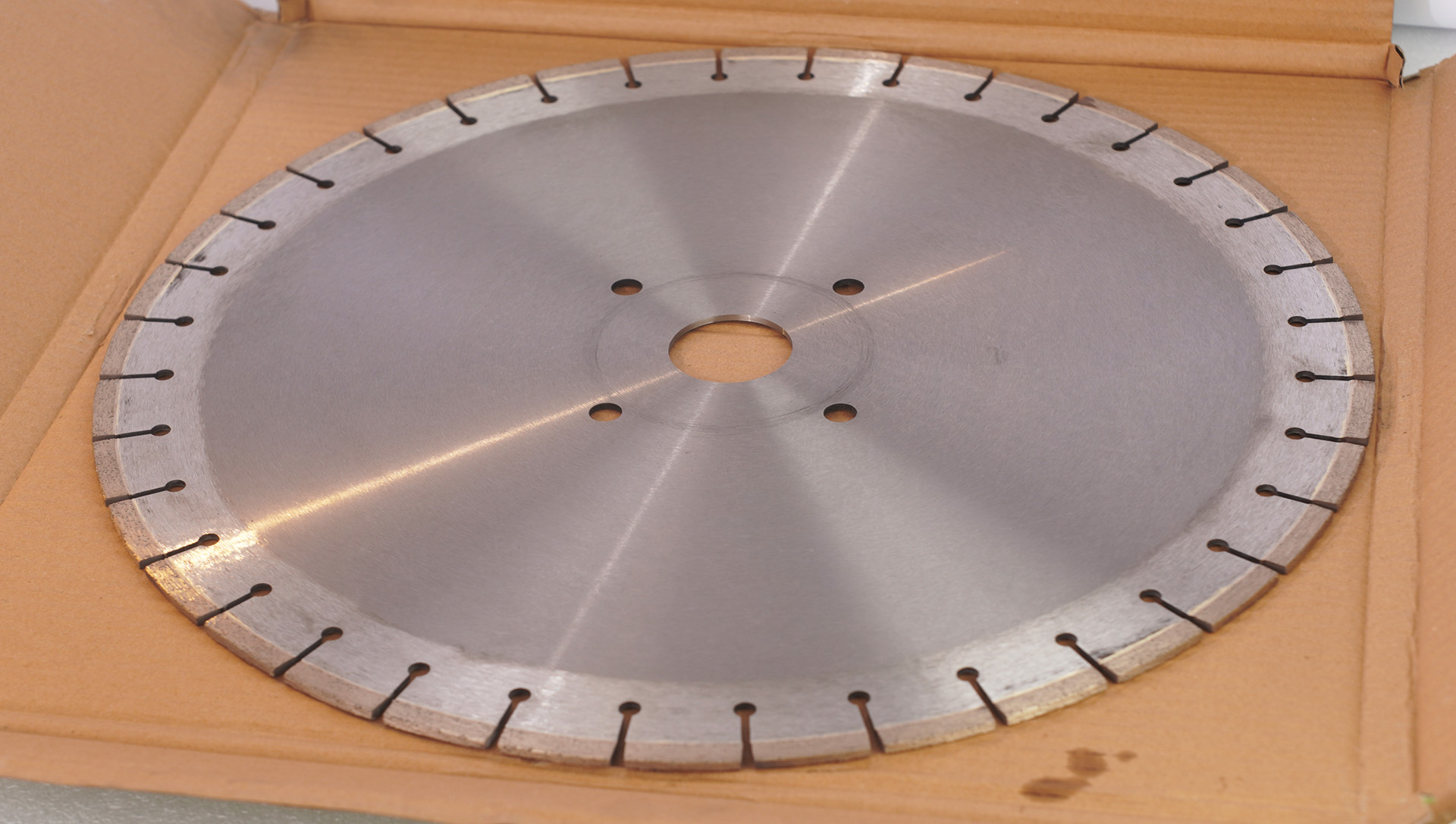In construction, metallurgy, and refractory industries, workers often need to cut both refractory bricks and concrete in the same project. Many users ask: “Can I use one diamond saw blade for both materials?”
The answer is clear: Not recommended! While diamond blades can cut various non-metallic materials, refractory bricks and concrete have vastly different physical properties. Using the wrong blade leads to poor cutting efficiency, shorter blade life, and even material damage.
1. Material Properties Comparison
Hardness & Wear Resistance
- Refractory Bricks (e.g., high-alumina/silica bricks):
- Main components: Al₂O₃ (corundum), SiO₂ (quartz) – Mohs hardness 7-9, similar to granite.
- Dense structure, highly abrasive to diamonds.
- Concrete:
- Cement + aggregates (quartz sand/gravel) – Lower overall hardness (Mohs 5-6), but sharp quartz particles are highly abrasive.
Abrasiveness (to Blade Bond)
- Refractory Bricks: Hard but uniform, less abrasive to the metal bond.
- Concrete: Contains sharp quartz/sand that rapidly wears down the bond, causing premature diamond loss.
Brittleness vs. Toughness
- Refractory Bricks: Brittle – prone to chipping. Require fine-grit diamonds + high-bond grip for smooth cuts.
- Concrete: Tougher – generates impact forces. Needs shock-resistant diamonds + flexible bond.
Heat Conductivity
- Refractory Bricks: Poor heat dissipation – blades overheat fast (coolant essential).
- Concrete: Better heat conduction, but dry-cutting may still soften the bond.
Solution: Water cooling is ideal for both, but refractory cuts demand stricter temperature control.
2. Blade Formulation Differences
| Parameter | Refractory Brick Blade | Concrete Blade |
|---|---|---|
| Diamond Concentration | Higher (25%-35%) | Moderate (20%-30%) |
| Diamond Grit Size | Finer (40/50 mesh) | Coarser (30/40 mesh) |
| Diamond Strength | High (SMD/MBD grade) | Very high (Ti/Ni-coated) |
| Bond Hardness | Medium (cobalt-based) | High (WC iron/cobalt alloy) |
| Bond Wear Resistance | Moderate (diamond retention) | Extreme (quartz resistance) |
| Cutting Method | Wet-cut preferred | Wet/dry (wet recommended) |
Core Differences:
- Refractory Blades: High concentration + fine grit = clean cuts, less chipping.
- Concrete Blades: Tough bond + impact-resistant diamonds = handles abrasive aggregates.
3. Risks of Using the Wrong Blade
Using a concrete blade on refractory bricks:
- Rough cuts with chipped edges (coarse grit unsuitable)
- Slow progress (bond wears too slowly, diamonds dull faster)
- Shortened blade life (hard bricks accelerate diamond wear)
Using a refractory blade on concrete:
- Rapid bond erosion (quartz destroys the softer bond)
- Unstable cuts (fine grit can’t handle concrete’s impact)
- Higher costs (blades fail prematurely)
4. How to Choose the Right Blade
Option 1: Dedicated Blades (Best Performance)
- Refractory bricks: High-concentration, fine-grit, cobalt-bond blades.
- Concrete: WC-reinforced bond, shockproof diamond blades.
Option 2: Temporary Workarounds
If switching blades isn’t possible:
- Concrete blade for bricks: Reduce feed speed + maximize coolant.
- Refractory blade for concrete: Limit use to short, low-stress cuts.
Option 3: “Multi-Purpose” Blades (Limited Use)
Some “universal” blades (e.g., for stone/concrete) exist but perform poorly on refractory bricks. For frequent material switches, keep two dedicated blades.
Final Verdict
- Don’t share blades – Refractory bricks and concrete demand different designs.
- Refractory blades = precision; concrete blades = durability.
- Mismatched blades waste time and money.
Pro Tip: Buy separate blades if you regularly cut both materials. It’s cheaper than replacing ruined blades!



